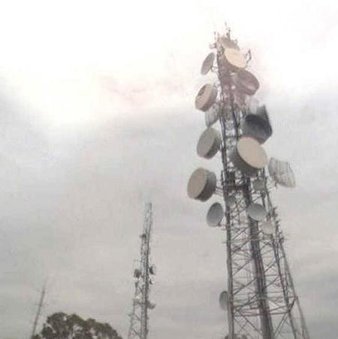I've been a broadcast meteorologist on television since the early 1990's. Happy to answer any questions about the weather or local TV news. Yes, I often wear sneakers on set just out of view of the camera.
Interesting question with a possible complicated answer. The easiest data point to look at is probably dewpoint, which is the amount of water vapor in the air. Obviously it is cooler at night because there is no incoming sunlight. Overnight the heat from the day radiates out to space and the air cools. The temperature will never fall below the dewpoint and when that number is reached the air is considered saturated. So the dewpoints are likely higher in Kansas as opposed to Colorado. Moisture travels northward from the Gulf easier across the plains as opposed to the higher elevations in the mountains. So check the dewpoint. Thanks!
Tornado debris signature. Radar can tell the difference between rain and hail and other “targets”. When a tornado starts lifting things in the air the radar can show that, often called a debris ball. It is helpful because farther away from the radar dish, as the earth curves away from the beam, what we see are radar targets above the surface as opposed the the actual tornado. The TDS gives more confidence that the rotation is actually on the ground. Thanks! https://en.m.wikipedia.org/wiki/Tornado_debris_signature
Tough call for me not knowing specific examples and a location, Mark. I will say that the temperature can only fall to the dewpoint, so if the moisture content of the air, dewpoint, stays around 32 that could account for what you are seeing. You can find the current dewpoint by looking for your city on weather.gov. Hope that helps.
Yup. Some do. ;)
SWAT Team Commander (Retired)
 How do you decide whether to try and kill a hostage taker?
How do you decide whether to try and kill a hostage taker?
Radio program/music director
 Do radio stations have to pay royalties to artists to play their songs?
Do radio stations have to pay royalties to artists to play their songs?
Navy Officer (Former)
 Why do so many people miss the military after they get out?
Why do so many people miss the military after they get out?
Rain on its own doesn’t cause choppy seas, Ron. The wind creates the chop and the speed of the wind is determined by the difference in pressure between the low pressure storm and surrounding high pressure. The atmosphere doesn’t like to be out of balance so the greater the difference in pressure the faster the air moves to find balance. Thanks.
Great question, Marv! The exact location would have a lot to do with it but, in general, cold air is heavier than warm air. In the winter, especially at night, the cold air sinks into the valleys and pools up. At the beach, when the sun is out, the land warms faster than the water and the air above the land rises. Since the air needs to be replaced the cooler air moves in from over the water on the sea breeze. Hope that helps. Thanks!
Hi, Ginger. I’m unfamiliar with “pron”. We’re taught to think of air in parcels sometimes because it helps to visualize the atmosphere and how it will react to influences. Like a hot air balloon will rise as long as the inside air is warmer than the surrounding air. So a parcel of dry air can have specific effects, as can a parcel of moist air. If you’re still curious you could contact your local NWS office and weather.gov. The person you listened to was likely a forensic meteorologist, you could do a web search. Thanks!
-OR-
 Login with Facebook
Login with Facebook (max 20 characters - letters, numbers, and underscores only. Note that your username is private, and you have the option to choose an alias when asking questions or hosting a Q&A.)
(A valid e-mail address is required. Your e-mail will not be shared with anyone.)
(min 5 characters)
By checking this box, you acknowledge that you have read and agree to Jobstr.com’s Terms and Privacy Policy.
-OR-
 Register with Facebook
Register with Facebook(Don't worry: you'll be able to choose an alias when asking questions or hosting a Q&A.)